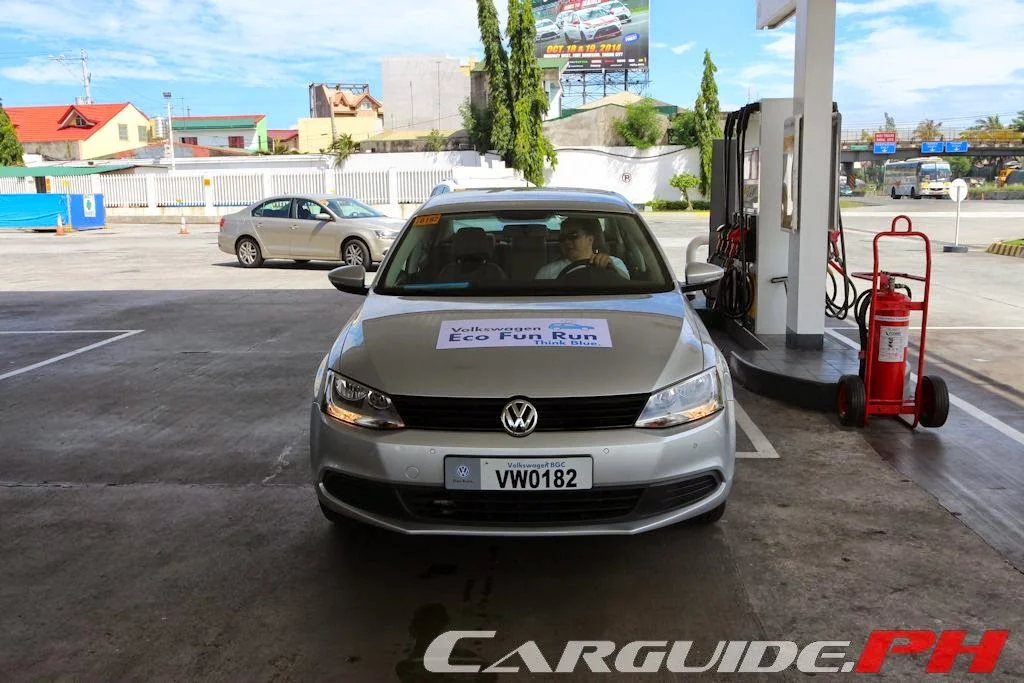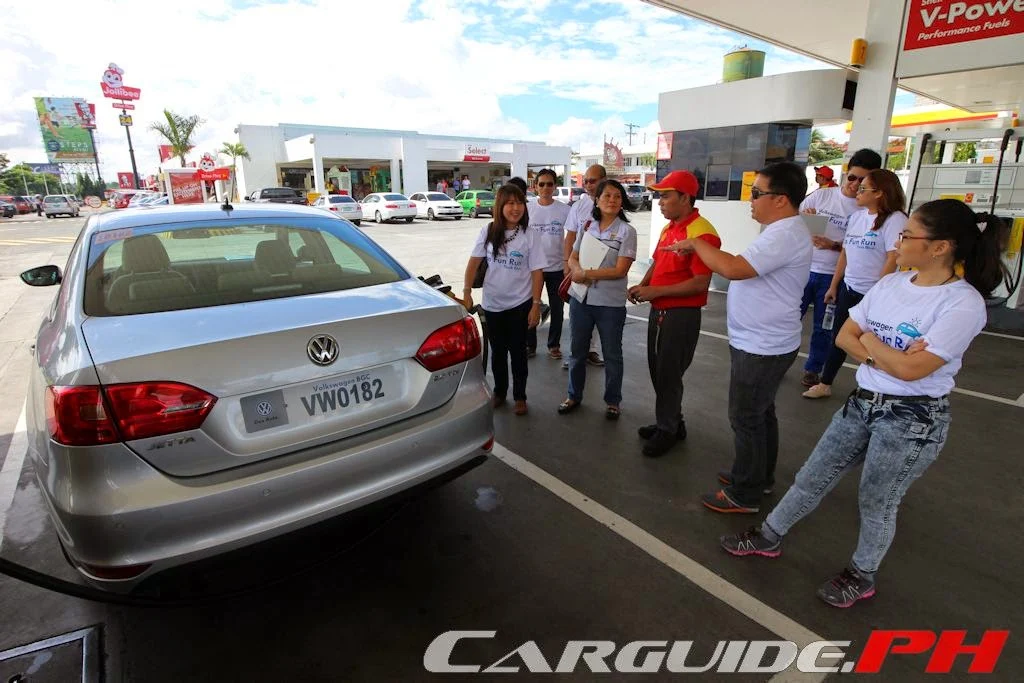 |
| Photos by Ulysses Ang |
Though some still think of diesels as something slow and unrefined, that notion is best left to your grandfather. Technology has remarkably improved, transforming the go-to drivetrain of workhorses into one that delivers exhilarating performance without sacrificing fuel economy and emissions. For instance, 55 percent of cars sold in Europe are diesels; that’s up from just over 30 percent a decade ago. And one of the leaders in this revolution is Volkswagen and their TDI technology.
Though Volkswagen Philippines’s offering of a robust line of diesel-powered passenger cars started out more because of necessity than desire (remember “manganese-gate”?), they’ve since embraced this identity. And why wouldn’t they? Though TDI has become a common noun to describe anything with a turbo-diesel powerplant, it’s actually a Volkswagen trademark; like calling photocopying, “Xeroxing” or toothpaste, “Colgate”.
Each drop of diesel fuel contains 15 percent more potential energy than its gasoline counterpart, and more energy means more power at less fuel. It’s a simple rule of chemistry; only Volkswagen found out how to bring it up a notch with TDI. Though diesels are already inherently efficient to begin with, you want one that’s superiorly engineered with power and performance. ‘T’ in TDI stands for the variable-geometry turbo which gives diesel-fed Volkswagens instantaneous power and torque, even at low speeds. Meanwhile ‘DI’ stands for the tiny piezo fuel injectors that precisely deliver droplets of fuel directly into the combustion changer for a cleaner, more even burn. The result is diesel Volkswagens with lower noise, excellent refinement, and cleaner emissions.
All this talk about technology is well and good, but the truth is absolutely in the pudding (or in this case, the cars). Volkswagen Philippines is putting their cutting-edge tech (and perhaps their very reputation) on the line with the first fuel economy run starring their mainstream models: Polo, Jetta, and Tiguan. As a caveat, the fuel consumption figures achieved during these eco fun runs are probably not what the average driver will achieve. With prizes at stake, they’re on the far right of the bell curve; some will actually go through some lengths to bend the rules or pretend they don’t exist altogether. Still, they are representative of what these cars can ultimately do, and that still counts for something.
As the luck of the draw would have it, this author and his partner ended up with the Jetta 2.0 TDI. Expectations are sky high given it’s the most economical one in the trio (based on VW’s internal tests). And to make matters worse, the two other Jetta teams have a renowned fuel miser and a rule bender, respectively. Given the circumstances, it was tempting to raise the white flag even before the send-off. Instead, it was decided to do some experimentation. With limited seat time in the Jetta before this run, this team wanted to know how little fuel the Jetta sipped in a realistic setting with the air conditioning set to fan speed 2 and the temperature knob turned just a quarter away from the coolest setting. Even the tires were set at the maximum manufacturer’s recommended pressure and no more.
Topping up with Shell V-Power Nitro+ diesel at the South Luzon Expressway, it’s time for that mad dash down to Batangas and to a hidden gem called Cintai Corito’s Garden near Lipa and then back to the Volkswagen dealership in Bonifacio Global City. Even with tires pumped up, the Jetta returns an excellent ride. More than just that, the 2.0-liter power unit is remarkably quiet. Plus, with 280 Nm of torque available from as low as 1,750 rpm, the Jetta made short shifting or skipping gears entirely possible. The five-speed manual is precise and accurate with crisp engagement between gears. What’s more, there’s a gear shift indicator in the multi-function display telling you the most economical time to shift. After mastering the rather tricky clutch pedal, the Jetta allows you to shift as low as 1,500 rpm without stalling. In addition, it carries its momentum very well, allowing it to coast without losing much speed even on level ground.
Following the rules set for this eco run to the tee, this team managed 24.35 km/L, a remarkable feat given the level of comfort enjoyed. The winning Jetta piloted by Ronald Delos Reyes and Kris Lim turned up with 29.47 km/L, although their white event shirts did turn transparent at one point. The Tiguan category was won by Love-Love Tioseco and Tessa Salazar (27.39 km/L) while the Polo won with The Philippine STAR’s other motoring writer, Angel Rivero and Geg Alcober (18.39 km/L).
The total route of this Volkswagen fuel economy fun run took less than 160 kilometers in total, so it’s just a taste of what TDI technology does. Nonetheless, it shows what this technology is capable of: offering excellent power with lower emissions and better fuel economy. Volkswagen’s TDI technology is certainly a no compromise approach offering excellent power with fewer trips to the pump. Indeed, only in a Volkswagen can you celebrate the possibilities of diesel performance. And you can put the window down with no worries. This is how bright and clean the future can be.













Hi Uly, how is it possible for the heavier tiguan to yield better figures than the small polo? it is really up to the driver skills?
ReplyDeleteWell, there were different set of drivers for the Tiguan, Jetta, and Polo. My guess is that:
Delete1. The route chosen (mostly highway) is a perfect fit for larger diesel engines because they can shift at lower rpms and yet can still maintain speed.
2. The gearing of the Polo is more for city driving as opposed to use on highways.
This comment has been removed by the author.
DeleteSir does that mean that the POLO can only excel in fuel savings during city driving compared to the bigger Tiguans and Passats?
DeleteBigger engine option does not necessarily translate to more visits at the pump. In fact at full load variants with bigger engines tend to be more efficient. This is the problem with the Ecoboost engines especially with the F150 and Expedition. If unladen, its very efficient and saves you fuel. But at full load or with trailer it becomes very thirsty. In short small "efficient" engines are made for most people, who run around the city with maybe 1 or 2 passengers on average. If you plan to make full use of your car or truck, probably in business you better think again.
ReplyDelete